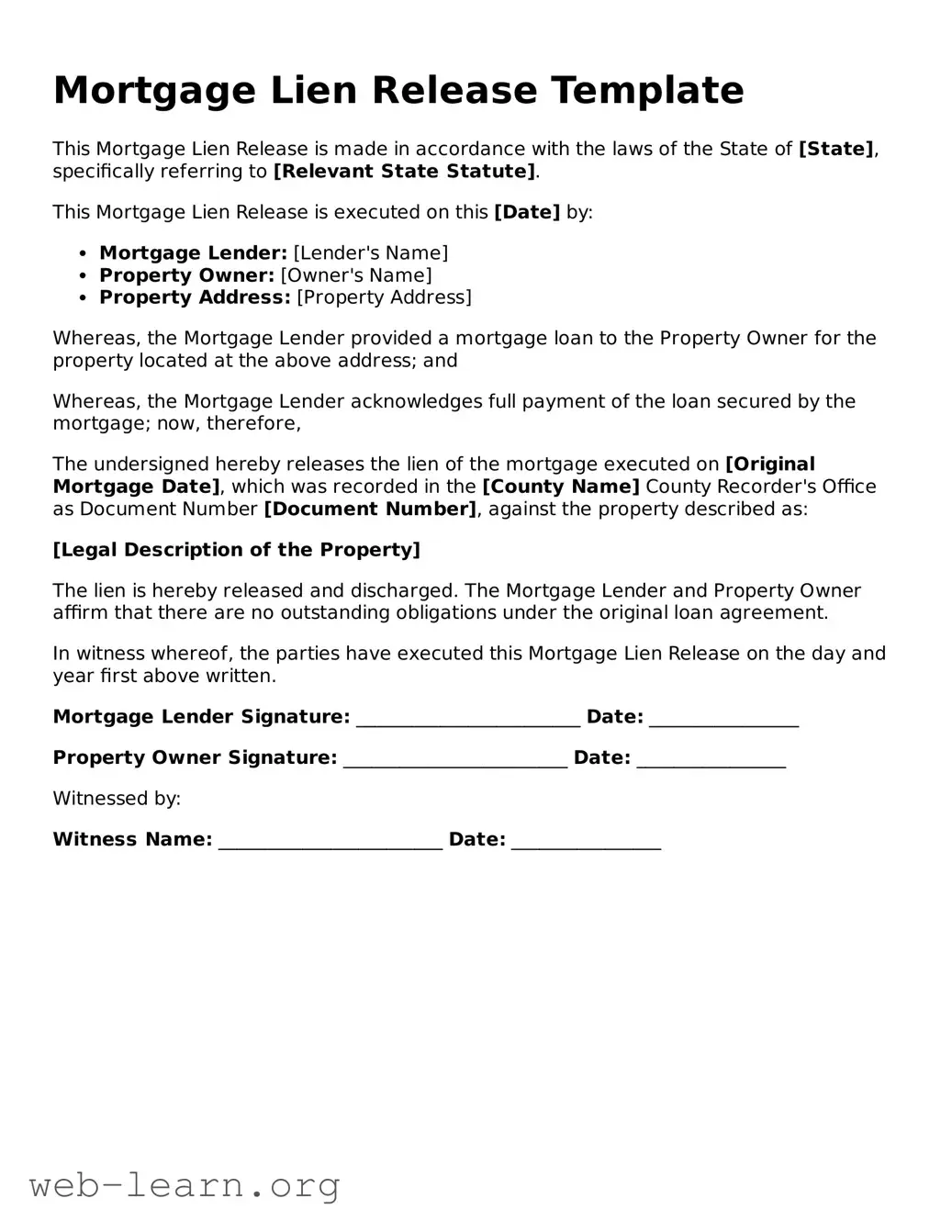Mortgage Lien Release Template
This Mortgage Lien Release is made in accordance with the laws of the State of [State], specifically referring to [Relevant State Statute].
This Mortgage Lien Release is executed on this [Date] by:
- Mortgage Lender: [Lender's Name]
- Property Owner: [Owner's Name]
- Property Address: [Property Address]
Whereas, the Mortgage Lender provided a mortgage loan to the Property Owner for the property located at the above address; and
Whereas, the Mortgage Lender acknowledges full payment of the loan secured by the mortgage; now, therefore,
The undersigned hereby releases the lien of the mortgage executed on [Original Mortgage Date], which was recorded in the [County Name] County Recorder's Office as Document Number [Document Number], against the property described as:
[Legal Description of the Property]
The lien is hereby released and discharged. The Mortgage Lender and Property Owner affirm that there are no outstanding obligations under the original loan agreement.
In witness whereof, the parties have executed this Mortgage Lien Release on the day and year first above written.
Mortgage Lender Signature: ________________________ Date: ________________
Property Owner Signature: ________________________ Date: ________________
Witnessed by:
Witness Name: ________________________ Date: ________________
